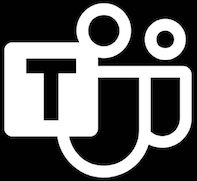Brands are making you mad on purpose
Charmin’s “millennial toilet paper” flap might be the most 2019 advertising campaign yet concocted. The pitch — that buying toilet paper is too expensive, so you should instead buy this giant roll of toilet paper that will last a month — attempts to address a genuine problem but reads downright apocalyptic in the right tone. It throws a bone to the legion of Facebook meme accounts for cable TV-addled boomers who hate anyone under 30. And most importantly, it makes Charmin the subject of relentless online dunking. By every traditional marketing theory, millennial toilet paper is a bad idea. By today’s rules though, it’s almost perfect.
More and more companies are running the millennial toilet paper playbook. Last year, IHOP, the pleasantly gentle roadside diner, changed its name to IHOb, or “International House of Burgers,” which is the sort of year-round April Fools’ joke that makes you angry in ways you can’t fully describe without sounding silly. Burger King hit way too close to home by selling us a box of carbs framed as a Depression Meal. Kraft unveiled a line of “salad frosting,” which is literally just ranch dressing, as a way to hoodwink your kids into eating healthier. As CNN pointed out, ostensibly this only works if you somehow have kids who have never tasted ranch before.
The strategy here is simple. It’s no secret that a crucial fixture of internet culture is the collective roasting of a clumsy ad, and marketing has always been about sparking a conversation. So, brands have learned to leverage outrage, rather than joy or humor or political zeitgeist, for their own gain. The fastest way to the top of the trending page is to create your own mini-backlash; mild enough to not leave lasting damage, but annoying enough that everyone wants to get in on the fun.
Mark Bartholomew is a professor of law at the University of Buffalo, who specifically studies intellectual law and advertising. Last year, he wrote an article titled “The Law of Advertising Outrage,” which analyzed the legal limits and precedents for companies to take advantage of consumer anger in their marketing blitzes.
Bartholomew says that while “outrage advertising” is as old as the industry itself, brands today have become fluent in the ironic, bitterly sarcastic spirit of modern social media habits. How else can you advertise to an acerbic populace than by baiting them? We talked about that, the impression-tracking metrics that encourage companies to take more risks, and how he thinks we deserve a legal right to look under the hood to see exactly how the algorithms are trying to make us outraged.
Why have brands started to realize that a negative reaction to their campaigns is a thing they can leverage?
I think there’s a couple things going on here. There’s already a concern about generating attention, you can’t sell stuff if people aren’t paying attention to you. But there’s a balance, and there’s a danger of turning people off. You can get attention by punching someone in the face, but that could cause them running into a competitor’s arms. But what I think is going on now is the risk/reward calculus that’s always been there has been tweaked a little bit.
When you had these [outrage] strategies before, you’d bring it out there and see what happens, but you wouldn’t know [the impact.] But now, with quantified engagements, where you can see how much people are retweeting something, companies can pinpoint the word-of-mouth of an IHOb burger. I think that’s inspired more comfort in using these strategies.
The other thing is that the upside of these strategies is greater. There’s still a downside, but the upside is that people can share it, or repackage it, and I know that when I’m on social media I avoid the ads. But when someone sends me an ad, or retweets an ad, I’m going to look at it.
Is this new? Or do you think it’s an extension of a marketing strategy that goes back decades?
I’d say it’s more of a continuation of a trend. But if you look at a diagram of it, all of a sudden it’s going way up. We’ve had companies that have pushed the envelope before. I was just looking at some saucy ads in the ’50s, but those are becoming less outliers and more mainstream. That goes back to the technology we were talking about, the ability to calibrate the risks.
Do you think it’s easier to get more impressions on an ad that inspires a negative reaction, rather than a positive reaction? Do you think it’s easier to get a reaction that way?
I think it’s definitely easier. The downside is there, you might engage them but also upset them. But there’s no doubt, and I’ve seen studies about this, that by using inflammatory words like “kill,” you’re much more likely to get engagement with that than with more bland language. I think advertisers are understanding that well, and that’s part of the reason for this trend.
Brands usually take these risks when it’s fairly low-stakes. Like, people understandably get upset about Chick-fil-A’s LGBTQ history, but it’s hard to imagine anyone getting too upset over “millennial toilet paper.” That being said, do you think this kind of marketing does backfire? Has it ever caused real, lasting damage to a brand?
I can’t think of something where a campaign was designed to be annoying, where the annoyance has really hurt the company. This isn’t quite the same thing, but there was a Dolce & Gabbana campaign about a year ago where they had an Asian model who was trying to pick up a cannoli with chopsticks. Maybe that’s hinges more towards outrageous than annoying, but I just saw something about how the company has weathered that storm. So I think in general, it’s worth it. People’s attention spans for these kind of things is short-lived.
That leads to my next question. If you’re an individual who spends a lot of time online, outrage is a constant accessory to life. So if you’re making an IHOb campaign that you know might ruffle some feathers, there must be understanding that, at worst, you’re looking at a two-day news cycle right?
I’d put it a little bit differently. I think there is potential for real harm in a mistake in an advertising campaign. The Kendall Jenner Pepsi campaign comes to mind. I think that really hurt them. It was bad. You still have to be careful.
But I think if you’re careful with the levels of annoyance, and you walk up to some lines, but you don’t cross the full-blown outrage line, I think you’re saying, “There might be some potential costs to this, but it’s worth it for the attention battle alone.” There’s a marketplace now where the way we consume advertising is different. We skip commercials now. To get attention, to get things in memory, you need to take some chances.
Source: https://bit.ly/2IQMwEy






 Text Us
Text Us info@geekmob.ca
info@geekmob.ca Schedule Teams
Schedule Teams
